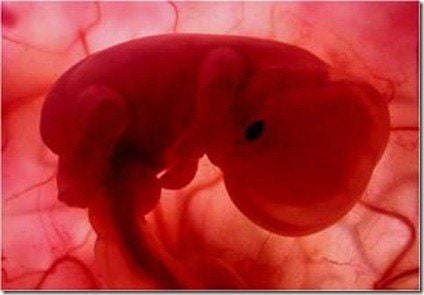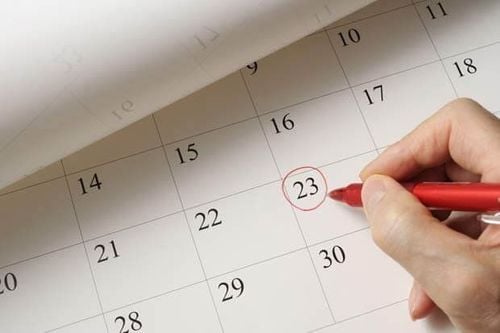This is an automatically translated article.
The basal body temperature method is a method based on understanding fertility and is a method of natural family planning. Basal body temperature is your body temperature when you are completely at rest. Ovulation can cause a slight increase in basal body temperature.You will be most fertile for 2-3 days before your temperature rises. By monitoring basal body temperature every day, you can predict when you will ovulate. In turn, this can help you determine when you're most likely to conceive. If you're hoping to get pregnant, you can use basal body temperature to determine the best days to have sex. Similarly, if you want to prevent pregnancy, you can use basal body temperature to help determine the days when unprotected sex should be avoided.
1. What is basal body temperature (BBT)?
Basal body temperature is the body temperature at rest. Basal body temperature varies based on several factors, including hormone levels in the body. During ovulation, body temperature changes due to increased levels of the hormone progesterone, which causes body temperature to rise as well. Then, just before the next menstrual period begins, progesterone levels drop. This means that the body temperature will also drop, unless the woman is pregnant because during pregnancy progesterone levels will remain high. To find out what her basal body temperature is, a woman needs to take her temperature in the morning before getting out of bed. Any activity during this time can cause the body temperature to rise, causing the heat chart to become inaccurate.The next step in this process is basal body temperature mapping. This requires the woman to record her basal body temperature according to the guidelines of some fertility books. Another option for basal body temperature charting is fertility rate recognition software aka fertility calendars. There are several online fertility calendar options and a number of fertility smartphone apps available, and many of them are completely free. Each woman can also create her own chart. The heat chart should be drawn vertically with every tenth of a degree for a square. In the horizontal direction are the days of their menstrual cycle.
Most women prefer to use a computer to record basal body temperature charts so that they can store a lot of information and reduce the risk of errors. Most ovulation software will tell them when an egg will be released. While drawing the chart yourself can bring many errors and give inaccurate results.

Thân nhiệt cơ bản là nhiệt độ cơ thể trong trạng thái hoàn toàn nghỉ ngơi
2. How to measure basal body temperature
Once the basal temperature chart has been selected, the woman will need to use a thermometer to measure her basal temperature. There are special thermometers that are made specifically for the basic needs of measuring body temperature, but they are not really necessary. Ideally, there are thermometers with an accuracy of 1/100. Measuring basal body temperature is not too difficult. However, there are a few rules that every woman should keep in mind:Basal body temperature should be measured at the same time (difference not more than 30 minutes) and every morning. For example, when a woman takes her temperature at 7:30 a.m., she must not take her temperature earlier than 7 a.m. or later than 8 a.m. in the following days. During the temperature measurement, the woman must not stand or sit up, walk or go to the toilet before taking the temperature. Usually, the measurement should be taken as soon as about one minute after waking up. Sleep for at least three to four hours in a row before taking your temperature in the morning. If the woman stays up all night or frequently wakes up and walks around at night, the readings may not be accurate. The same thermometer should be used throughout the thermographing process. If you buy a new one, use it from the first day of your next cycle The best way to chart your basal body temperature is to start taking your temperature on the first day of your period and keep working. this every morning for the entire cycle. Every day, measure and record your body temperature when you wake up and the time it takes to take your temperature. After gaining experience with charting, some women may find that they can skip the first few days of their cycle completely and start taking their temperature from day 5 or day 7. However, experts recommend that until you know what time period is most likely to ovulate, the best way is to measure basal body temperature throughout the entire cycle.

Sau khi đã lựa chọn được biểu đồ thân nhiệt cơ bản, người phụ nữ sẽ cần sử dụng nhiệt kế để đo nhiệt độ cơ bản
3. Determine the day of ovulation based on basal body temperature chart
With basal basal body temperature chart, a woman can relatively determine when she ovulates. Basal body temperature can rise or fall throughout the cycle, but the average basal temperature before ovulation is always lower than the mean basal temperature after ovulation.After seeing at least 3 consecutive days of higher temperatures, ovulation may well have occurred the day before the first higher temperature. Along with tracking cervical mucus, predicting ovulation can provide relatively accurate results. With luck, a woman can feel a sharp drop in body temperature on the day of ovulation, but not all women feel this.
If using basal body temperature chart with the desire to get pregnant, the main way is to look for patterns. Do women tend to ovulate on certain days of the cycle? This information will help couples plan better sex time. For example: If in 3 months, ovulation is recorded on the 11th, 12th and 15th, then in the next menstrual cycle, the woman and her partner should have sex on days 6 to 16. and pay special attention to the days from 11 to 15.
It is not necessary to have sex on the day of ovulation to get pregnant. Having sex a few times in the days before ovulation is enough for the sperm to meet the egg in time. Some couples have sex every other day in the week before ovulation is also a good method.

Không nhất thiết cần quan hệ vào ngày rụng trứng để có thai
4. Other issues to watch for
To form the most effective basal body temperature chart, every woman should track more than just her morning basal temperature. Here are some notable issues they need to add to their basal body temperature chart:Sex days: This helps a woman see if she is having intercourse at the right time . There are only about 5-7 days in each cycle when sex can lead to pregnancy of which 2-3 days before ovulation is best. If you want to get pregnant, don't miss your chance these days. Another reason to add sex days to the chart is to show the frequency of sex. If infertility is caused by a man's factor, having sex every day can reduce your chances of getting pregnant. On the other hand, having sex just once in the days leading up to ovulation may not be enough. Cervical mucus: If something other than temperature needs to be monitored, cervical mucus is an important option. Body temperature can only tell a woman about ovulation once it has occurred. But cervical mucus can tell when a woman is about to ovulate, and they can use that information to know when to have sex. Cervical position: Besides tracking cervical mucus, a woman can also track cervical position to predict ovulation. The cervix will become taller, softer, and more dilated as ovulation approaches. The cervix will then become firmer, lower and narrower. Illness, stress and trouble sleeping: Even a common cold can mess up a woman's basal body temperature chart. For example, if a blocked sinus forces them to sleep with their mouths open, their body temperature may drop. Results of the ovulation predictor kit. If you're using an ovulation predictor kit or any other ovulation prediction technology, experts also recommend marking these results on a basal body temperature chart.
5. What happens if you don't ovulate?
One of the advantages of basal body temperature charting is that it allows a woman to track whether she is ovulating. Signs on the chart that they're not ovulating include:Irregular menstrual cycles Abnormally long or short periods An elevated but intermittent temperature Short luteal phase (less than 9 days) No mucus date of cervix If ovulation does not occur, the woman will not be able to get pregnant. If ovulation is irregular, it can be a sign of a woman's risk of infertility, which is also a common cause of female infertility. Most women who are ovulating can take fertility drugs to stimulate ovulation and hopefully help them get pregnant. Clomid is the most common fertility drug used to treat anovulation.

Một vài dấu hiệu biểu hiện không có rụng trứng
Please dial HOTLINE for more information or register for an appointment HERE. Download MyVinmec app to make appointments faster and to manage your bookings easily.
Reference source: babycenter.com, verywellfamily.comSEE MORE
Natural contraception by calculating the day of ovulation Great tips for calculating ovulation days to help couples easily conceive How to calculate ovulation for women with menstrual cycles erratic













